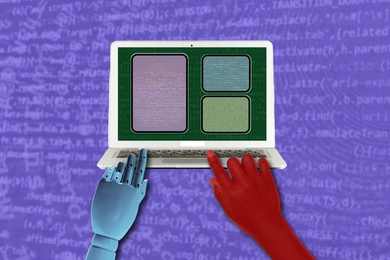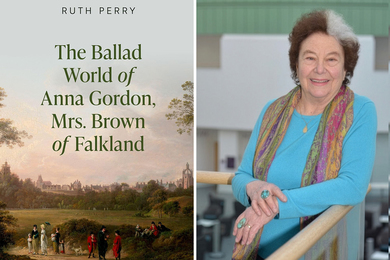MIT has launched a new graduate program in microbiology, integrating departments and disciplines from around the Institute. More than 50 faculty members from 10 MIT departments and divisions will participate in the program.
Alan Grossman, professor of biology and director of the new program, said he came up with the idea after realizing how many departments use microbes in their research at MIT.
"There's a push in many departments to do more life sciences research. Electrical engineering and computer science, physics, civil engineering have in the last several years had a very strong microbiology component," Grossman said. "It seemed like a really great opportunity to bring together people doing microbiology research from a range of different points of view.
"What's novel about the program is its breadth and interdisciplinary nature, and the expectation that students will have access to cell and molecular biologists, people who study pathogenesis and infectious disease, immunologists, environmental microbiologists, oceanographers, chemical engineers, computational biologists, evolutionary biologists, synthetic biologists," he said. "It's the integration of all of that that is really going to be the strength of the program.
Grossman said he hopes the program will attract students who are interested in all aspects of microbiology, as well as chemistry, physics, engineering, or computation. Once enrolled in the microbiology program, students will spend their first year taking courses and doing laboratory rotations before choosing a lab for their graduate research. Participating departments include the Departments of Biology, Biological Engineering, Chemistry, Chemical Engineering, Civil and Environmental Engineering, Electrical Engineering and Computer Science, Earth, Atmospheric and Planetary Sciences, Physics and Materials Science and Engineering.
The Committee on Graduate Programs approved the new program in May 2007.
The program will begin accepting applications for admission for the fall 2008 semester. Faculty serving as members of the Microbiology Graduate Committee are Grossman, who chairs the committee, Cathy Drennan of chemistry, Michael Laub of biology, Martin Polz of civil and environmental engineering, Leona Samson of biological engineering, David Schauer of biological engineering, Graham Walker of biology, Eric Alm of civil and environmental engineering, Kristala Jones Prather of chemical engineering, and JoAnne Stubbe of chemistry.
For more information about the program, visit microbiology.mit.edu or contact the program administrator, Bonnie Lee Whang, at microbiology@mit.edu.
Some fun facts about microbes:
- There are approximately 10 times the number of microbial cells in an adult body than there are human cells.
- The number of different microbial genes in the human gut is estimated to be more than 100 times the number of genes in the human genome.Â
- For those of us who like wine, yogurt, cheese, in many cases we have bacteria to thank. And of course yeasts are used to produce many food products too (including those essentials, bread and beer).
- Microbial metabolism can be very useful for cleaning up waste materials in the environment, such as degrading toluene or benzene to carbon dioxide, or converting soluble forms of uranium to insoluble and immobile mineral phases. Microbial respiration of iron oxides can even protect steel from corrosion.
- Based on a number published in Whitman et al, Proceedings of the National Academy of Sciences, "Prokaryotes: The Unseen Majority" that claims the total number of microbes on the planet is approximately 5 x 10^30, you can calculate that if you lined up all the microbes on the planet end to end in a chain, it would stretch to the sun and back 200 x 10^12 times.





